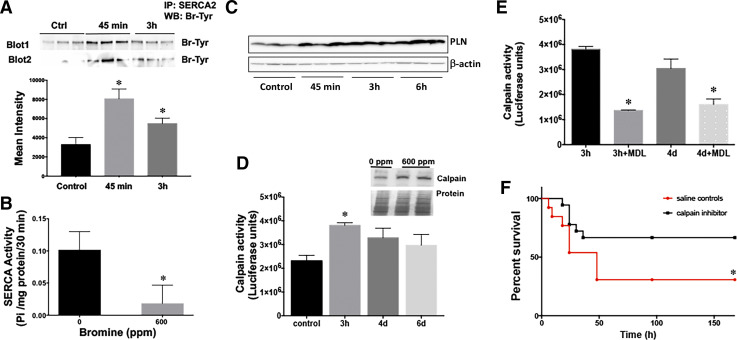Fig. 7.
Bromine (Br2) exposure causes bromination and inactivation of cardiac sarco(endo)plasmic reticulum Ca2+-ATPase 2 (SERCA2) and activation of cardiac calpain. A: Br2 inhalation induced chemical modification of SERCA protein via bromination of its tyrosine residues. Bottom, quantitation of the immunoblots for bromotyrosine. Data are means ± SE values; n = 6 for each group. *P < 0.05 vs. 0 ppm. B: left ventricular (LV) SERCA protein and activity were decreased in rats exposed to Br2 (600 ppm for 45 min). *P < 0.05 vs. 0 ppm. C: SERCA regulator phosphalamban (PLN) was also increased in the hearts of rats inhaling Br2. D: Br2-induced LV calpain activity. Inset, Western blot image of calpain 2 protein and the Ponceu-stained gel to show protein loading. Data are means ± SE values; n = 6 for each group. *P < 0.05 vs. 0 ppm. E: inhibition of Br2-induced LV calpain activity by the specific calpain inhibitor MDL28170 (1 mg/kg). Data are means ± SE values; n = 6 for each group. *P < 0.05 vs. saline control. F: Kaplan-Meier curves demonstrating that calpain inhibition improves survival after Br2 inhalation 7 days posttreatment. *P < 0.05 vs. saline control.

